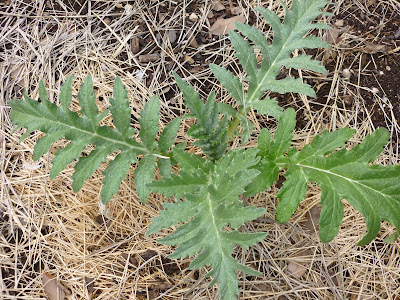It has been EXACTLY 5 months since I have posted anything here. FIVE. MONTHS. Unbelievable! I started traveling for work the end of March and finished up the middle of May. I was home less than 2 weeks total in that time and, I've got to say, it ate my lunch. The traveling was great...Augusta, Georgia was lush and green; Seoul, South Korea was stunning and incredibly clean for a city of over 10 million people (not to mention some of the best food I've ever eaten); Kaiserslautern, Germany was like "old home week" and more fun than work should be (Thanks Rebecca!!) and Fayetteville, North Carolina was a nice finish to it all. Still, I marvel at folks who travel all the times for their jobs. I never fully unpacked in those two months, just washed clothes when I was home and packed them right back up. The experiences were enriching, the work fascinating, but home suffered, the garden almost unrecognizable by the time late May rolled around. After I reintroduced myself to my family (hey! remember me?), I started trying to fall back into the farm schedule while playing catch up with everything else. On top of it all, I was out at the ranch cooking 10+ days in June. Eventually the garden got planted, the house got pulled together a bit more and I got back to work on projects I have going on.
Lots of Spring rains led to a very dry Summer. We put in new water catchment tanks in the midst of all the traveling and they were soon full to overflowing. Thank goodness as I need it now to keep things alive. The fig tree took forever to put on figs and then, BAM, they began ripening faster than we could eat them! They are big and really
tasty, maybe the best ever (I wonder if I say that every year). So out comes the stock pot and I make jam. I am a lazy jam maker, never using pectin or additives...just fruit, lemon juice and honey. And enough water to keep it from scorching. Here's how I do it.
Rinse your fruit well and then cut in large chunks. Place in a stock pot and add enough water to reach about halfway up the fruit. I used 8 cups halved figs and 2 1/2 cups water.
Add the juice of a lemon (about 3-4 Tablespoons) and turn the heat to medium. Begin to mash the fruit lightly to break it up.
Cook for a few hours, mashing the fruit up every now and then. It will get thicker as some of the water cooks off. It should have a slow bubble going on. Not really a full simmer, but some movement in the pot. I check on it every 30 minutes or so and give it a good stir, mashing up any larger pieces I see.
After it cooks down-today it was about 3 hours-I use my wand blender to make it smooth.
I don't know what I would do without a wand blender. I use it almost every day. I have a number of them that I use for different purposes. It is invaluable for making soap as it mixes the ingredients much better than I could by hand and brings the soap mixture to trace so very quickly (but that's another post, isn't it?).
If you want smooth jam, I can't imagine another tool so easy to use. You could always dump the hot fruit mixture into your blender and whiz it smooth, but that seems like more work and mess than I am up for (I told you I am a LAZY jam maker!).
Once it was smooth, I let it cook down even more...about 30 minutes for this batch. It spit and bubbled and I stirred it more frequently now. I was in the kitchen setting up the pot of water for the water bath and getting my jars and lids together. When it looked ready-not super runny and it would mound up on a spoon-I added the honey. For this batch, I used 1 1/4 cups of raw honey. You have to stir pretty consistently for a few minutes to incorporate it well. The color gets a bit darker. I don't cook it much beyond this as I don't want to negate the benefits of using raw honey.

I ladle the jam into clean jars and screw the lids on and place them in a pot of boiling water. When all the jars are in the pot, the water should be at least two inches above the lids. I cover the pot and keep it on a fast simmer (or slow boil) for 15 minutes. Then I remove the jars (with a jar lifter...a real handy kitchen tool if you can frequently) and place them on a clean kitchen towel to cool. They ping! as the jars cool and the lids suck in.
I've used this same recipe for peaches, plums, strawberries and it worked great for each.
This is my second batch of fig jam this month. I love using it for jam bars in the Fall. Shortbread crust with a thick layer of jam on top and then shortbread crumbs on top of the jam. Love. Maybe I'll get to post the recipe for jam bars sometime soon or maybe I'll wait until Fall...
And of course it is wonderful on toast, Scott's favorite use for it.
Have fun and SMILE!





































